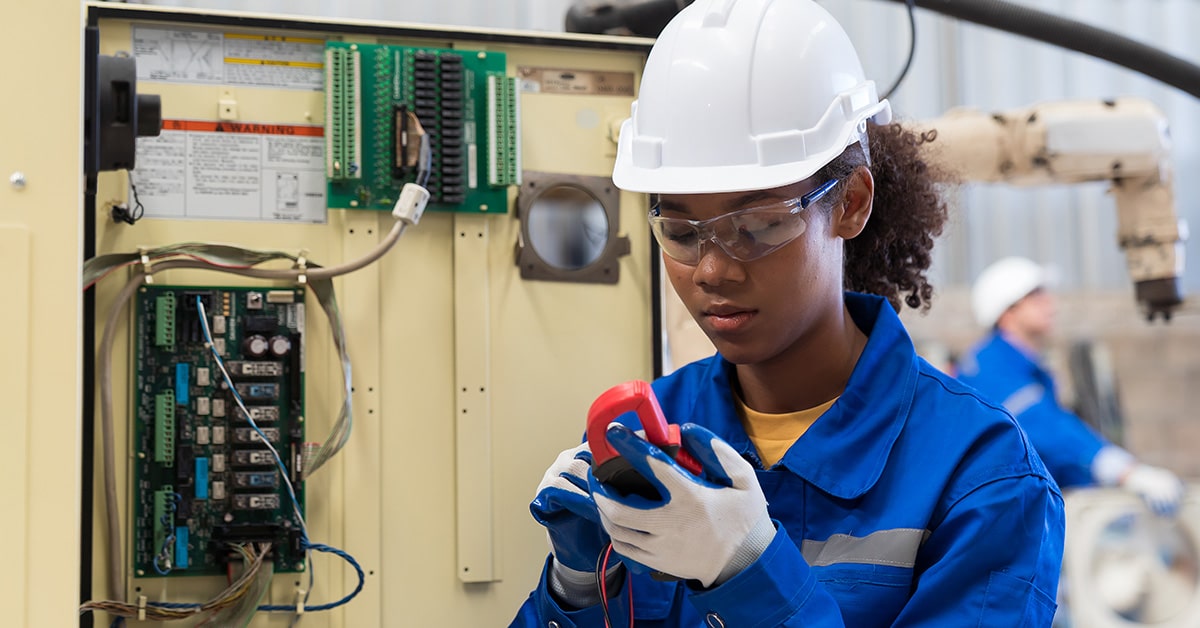Manufacturing firms face an expanding talent gap. According to a recent report by Caldwell (Forbes, 2024), over 600,000 positions remain unfilled, and one-third of employees are seeking new jobs. Despite industry-wide wage increases, companies face the challenge of finding, hiring and retaining top talent.
Industrial maintenance apprenticeships can bridge the talent gap for businesses. These apprenticeships combine in-class learning and hands-on training to help cultivate next-generation talent capable of navigating current requirements and meeting the new challenges of Industry 4.0.
In this piece, we’ll explore the value of an industrial maintenance apprenticeship program, how you can build one that works for your business, the skills this program can help improve, and what benefits maintenance training offers for both employers and employees.
The value of industrial maintenance apprenticeships
Compared to standard hiring practices, maintenance tech apprenticeships offer four key advantages:
- Structured on-the-job training: Apprenticeship programs allow new staff to take what they learn in the classroom and apply it directly to real-world scenarios.
- Improved retention and loyalty: Integrating apprentices into company culture as early as possible can improve staff retention and help build loyalty.
- Reduced skills gaps: With skills for manufacturing jobs — including artificial intelligence (AI), augmented reality (AR), and predictive maintenance — now in demand, apprenticeship programs can proactively target these areas.
- Enhanced quality and safety: Because apprentices are part of business culture from their first day of training, they gain increased familiarity with safety best practices and compliance requirements.
Designing an industrial maintenance apprenticeship framework
Top-performing industrial maintenance training programs don’t just happen. Instead, they require a methodical and apprentice-focused approach. Key components include:
- Length and phases: Programs typically range between 1 and 4 years and are broken into modules. Common modules include basic mechanical, advanced electrical, and CNC/fabrication.
- Collaboration with educational institutions: Local community colleges or technical schools provide the in-class learning component of apprenticeship programs, while your business facilitates the on-site work.
- Mentorship and coaching: Assigning experienced staff to mentor new apprentices ensures that they receive positive, actionable feedback.
- Certification pathways: By aligning mentorship programs with recognized certification pathways such as NIMS (National Institute for Metalworking Skills) or MSSC (Manufacturing Skills Standards Council), apprenticeships can help enhance career value.
Maintenance apprenticeship skills development
While every industrial maintenance apprenticeship program is unique to the organization, programs typically contain one (or more) of these core components:
- Maintenance technology: During their industrial maintenance technician apprenticeship, new staff can learn in-demand skills such as machine health monitoring and predictive maintenance analytics.
- Mechanical fundamentals: In an industrial maintenance mechanic apprenticeship, staff can explore fundamentals including lubrication, alignment and hydraulic/pneumatic basics.
- Electrical and controls: Industrial maintenance technician apprenticeships may also focus on wiring, sensor calibration and PLC programming.
- Troubleshooting and diagnostics: Applicable for all apprentices, this includes identifying root causes and the use of advanced monitoring solutions to track production line performance.
Programs should also include evolving technologies that align with Industry 4.0 objectives, such as:
- Advanced diagnostics and preventative maintenance: Apprentices must learn to work with tools such as Internet of Things (IoT)-enabled sensors, and predictive systems that help identify possible failures before they occur.
- Automation and robotics: Training for an industrial maintenance technician should also include troubleshooting automated systems and working with AI-driven maintenance systems.
- Network and cybersecurity skills: There’s a growing need for apprentices to understand and apply cybersecurity best practices to reduce the risk of compromise.
- Data interpretation and smart systems: Real-time data interpretation can help optimize performance and reduce downtime.
- Augmented reality (AR) and remote assistance: Hands-on training should include the use of AR tools for diagnostics and remote troubleshooting.
Benefits for employers and employees
Maintenance apprenticeship programs offer benefits for both employers and employees.
For employers, advantages include:
- Improved ROI: Hiring skilled external candidates is time-consuming and expensive. Apprenticeship programs offer a cost-effective way to onboard and train new hires and create a pipeline of internal candidates to fill senior roles as their skills increase.
- Enhanced culture and branding: By creating an employee-centric apprenticeship program, your businesses can earn a positive market reputation. This helps foster goodwill among customers and attract more skilled candidates who have heard about your efforts.
For employees, there are benefits such as:
- Clear career advancement: As noted above, turnover is a significant challenge for manufacturing firms. One contributing factor is the lack of clear career advancement opportunities, which can lead staff to pursue other options. With an apprenticeship program, your business can create roadmaps for promotion and advancement that keep employees engaged.
- Earning while learning: Continuing education can be costly. With an industrial apprenticeship, however, new employees can earn while they learn, allowing them to enhance their skills without breaking the bank.
Taking talent to the next level
What is a maintenance apprenticeship program? It provides organizations the chance to combine hands-on training with in-class learning to help new staff develop their skills and also to reduce the impact of growing talent gaps.
With an apprentice-focused approach, companies can provide valuable learning opportunities, connect new employees with skilled staff members, and create a workforce that’s committed to building your business.
References
Caldwell, L. (2024, June 27). Closing the Manufacturing Skills Gap Means Giving Talent a Capital T. Forbes. Retrieved from https://www.forbes.com/sites/lisacaldwell/2024/06/27/closing-the-manufacturing-skills-gap-means-giving-talent-a-capital-t/






